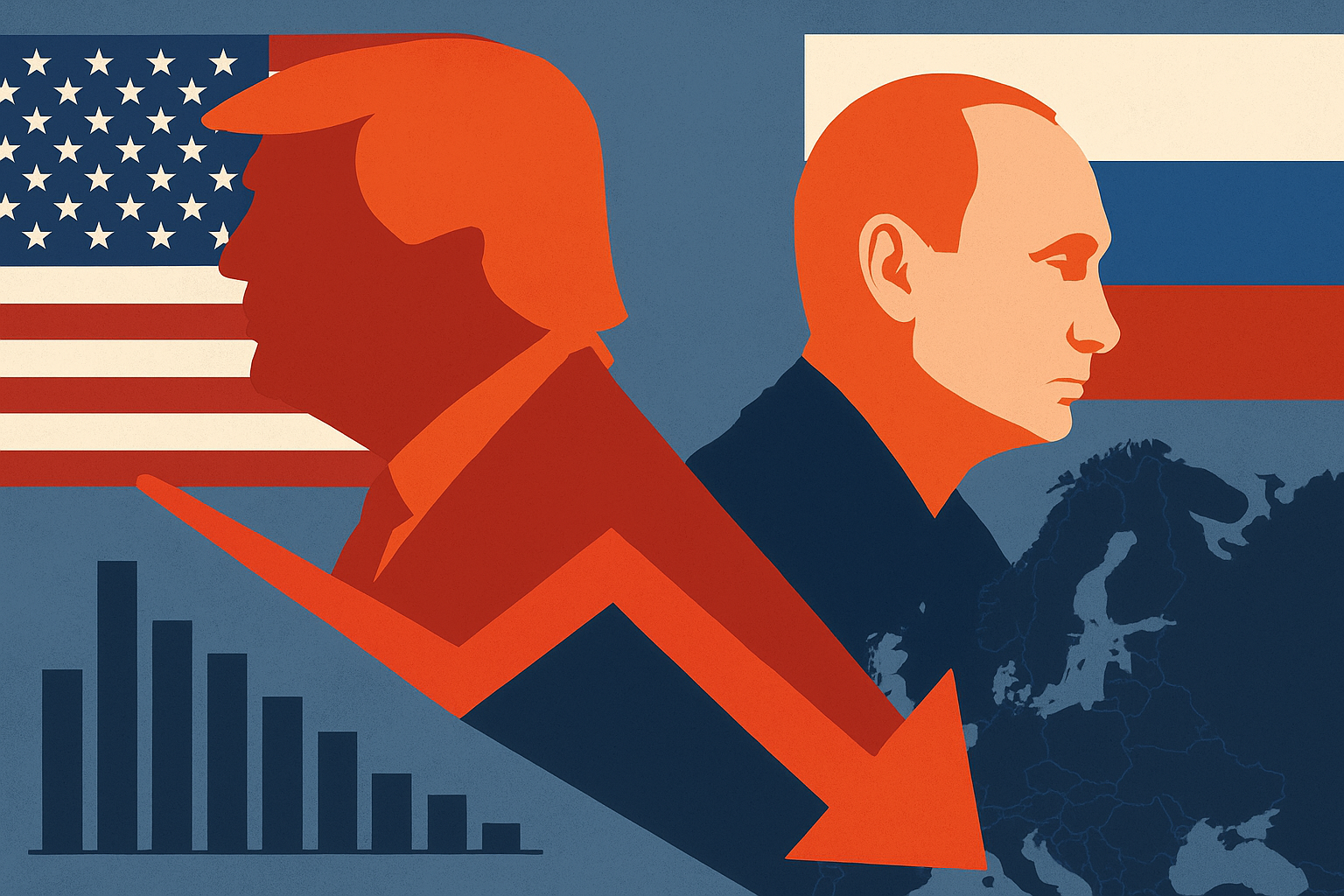European defense equities faced a sharp pullback this week after reports surfaced of a potential follow-up summit between U.S. President Donald Trump and Russian President Vladimir Putin, reigniting uncertainty around the Ukraine conflict and Europe’s defense spending trajectory. The reaction highlights how sensitive markets remain to geopolitical narratives — particularly those capable of shifting global military spending and investor sentiment in the defense sector.
While the news initially sparked optimism about potential diplomatic progress, investors quickly recalibrated, interpreting the development as a signal that the long-term defense expenditure boom seen since 2022 might lose momentum. As a result, shares of major European defense contractors — including BAE Systems, Rheinmetall, Leonardo, and Thales — slid between 3% and 6% during Friday trading, according to Reuters market data.
Why This Matters for Investors
Defense equities have been one of the few consistent outperformers in Europe since Russia’s 2022 invasion of Ukraine. Governments across NATO boosted military budgets, pushing order books for defense primes to record highs. However, this latest diplomatic overture between Washington and Moscow has injected a new layer of uncertainty.
A Trump–Putin summit — if realized — could lead to policy recalibration, potentially easing tensions that have underpinned defense sector valuations. Reuters reported that several European fund managers are now reassessing exposure to defense-linked ETFs and equities amid fears that a cooling of hostilities could limit further budget growth.
Yet analysts warn that optimism around peace prospects could be premature. As Bloomberg Intelligence noted in a recent report, even if dialogue resumes, NATO’s multi-year rearmament programs and modernization plans are already in motion, with billions committed to replenishing missile and ammunition stockpiles. These structural spending commitments will not be easily reversed.
Market Reaction and Sector Breakdown
Following the reports, Rheinmetall AG (ETR: RHM) — a key beneficiary of Europe’s arms ramp-up — dropped over 5% in Frankfurt trading, while BAE Systems (LON: BA) slipped nearly 4%. Defense-linked ETFs such as the iShares European Aerospace & Defense ETF (ESDF) also saw minor outflows, marking their first weekly decline in over a month.
According to Goldman Sachs’ European defense sector note, investor flows into defense equities had reached a six-month high before the summit headlines. The sudden reversal, the bank noted, underscores how sensitive valuations are to political optics, even when fundamental demand remains strong.
Analysts at Barclays added that short-term sentiment-driven pullbacks in defense names could create selective buying opportunities for long-term investors, particularly given the entrenched security tensions in Eastern Europe and the Middle East.
Future Trends to Watch
- Defense Budget Trajectories:
NATO’s latest spending figures show that 18 of 32 member states are now meeting or exceeding the alliance’s 2% GDP defense spending target. If peace negotiations gain momentum, some of these budgets could face public and political pressure for reallocation — especially in fiscally stretched economies. - Supply Chain & Defense Modernization:
Even with potential diplomatic progress, modernization projects — including AI-enabled targeting systems, missile defense, and drone surveillance — will likely continue, sustaining medium-term order pipelines for contractors. - Political Shifts in the U.S. and Europe:
A second Trump administration could usher in less predictable NATO engagement, prompting European states to either double down on defense autonomy or slow their spending commitments. Either scenario presents volatility for defense equities, particularly those with heavy transatlantic exposure. - Currency and Commodity Implications:
Reduced geopolitical tension could ease the U.S. dollar’s safe-haven bid and lower energy price volatility, indirectly affecting industrial and defense input costs. Investors should monitor defense-linked commodity exposure, including titanium, rare earths, and copper — all essential for advanced weapons production.
Key Investment Insight
The defense sector’s sharp correction may present an entry opportunity for investors with a long-term view. Structural military modernization, technological integration, and global security realignments will continue to underpin the sector’s fundamentals.
However, short-term volatility remains high. Investors should prioritize defense firms with strong order backlogs, diversified client bases, and limited reliance on short-term geopolitical catalysts. Firms such as Thales, BAE Systems, and Rheinmetall could remain resilient given their exposure to both European and Indo-Pacific defense contracts.
For institutional and retail investors, hedging exposure with aerospace ETFs or diversified industrial funds may help balance political risk while retaining upside potential in defense innovation.
As markets oscillate between geopolitical optimism and defense realism, investors will need to stay nimble. Whether this potential thaw in U.S.–Russia relations becomes a lasting peace effort or another short-lived headline, one thing is clear — defense remains a core geopolitical hedge in uncertain times.
Stay ahead of the market narrative with MoneyNews.Today — your source for daily investor insights across geopolitics, defense, and emerging market trends.





